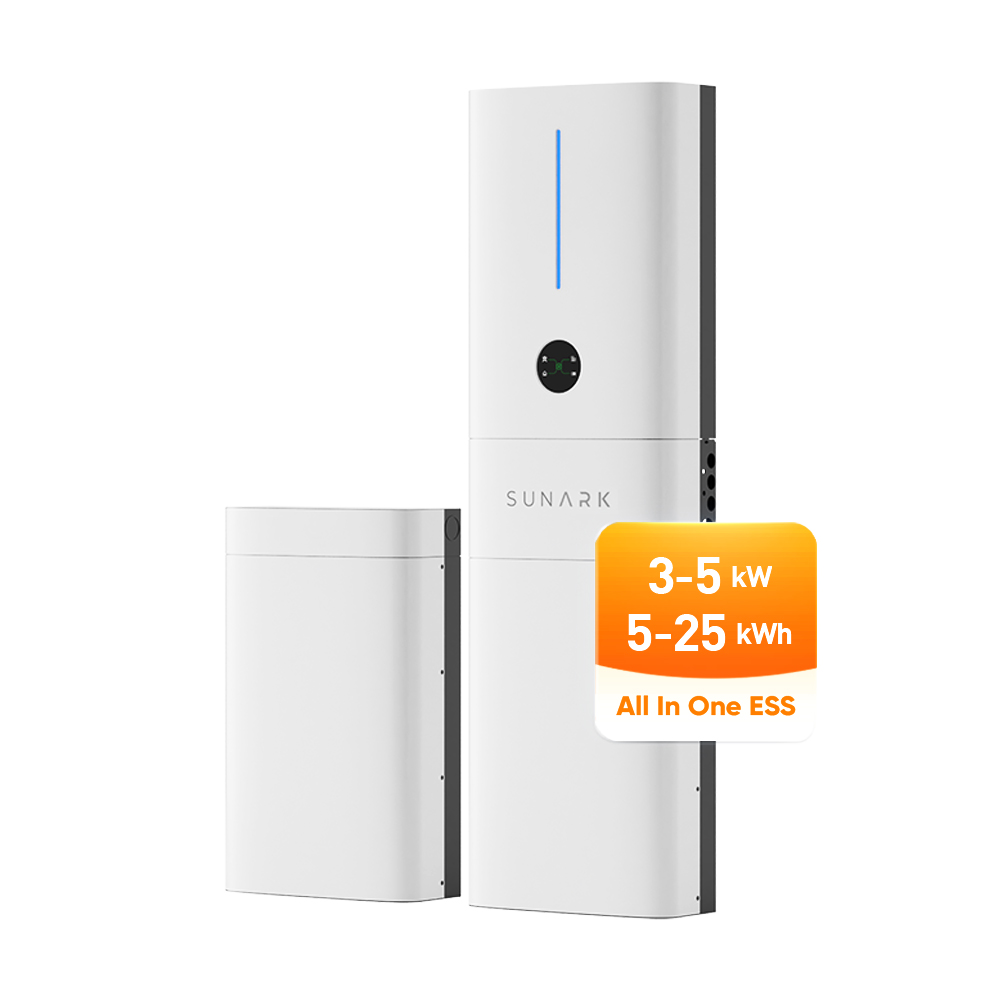An all-in-one energy storage system is a comprehensive solution that combines various components and technologies to store and manage energy efficiently. It typically integrates different elements such as batteries, inverters, charge controllers, and monitoring systems into a single unit. The aim of an all-in-one energy storage system is to provide a convenient and compact solution for storing and utilizing renewable energy.
Brand:
SunArkNominal Output Voltage:
186 ~ 290Vac/50 or 60HzBattery Cycle Life:
8000 Cycles @25°CBattery Nominal DC Voltage:
51.2VDCProtection:
Over Voltage;Under Voltage;Over Current;Short Circuit;Over TemperatureProtocol:
WiFi and RS232Number of MPP Trackers:
2European Efficiency:
97.4%Transfer Time:
15ms(For Personal Computers);20ms(For Home Appliances)Grid type:
Single PhaseCertification:
CE-EMC
Value of All-in-one energy storage system?
Enhanced energy storage capacity: Integrated energy storage systems can improve energy storage density and energy supply capabilities by integrating multiple energy storage technologies, allowing the system to better cope with peak energy demands and balance energy supply and demand.Energy management optimization: By integrating multiple energy storage technologies and control systems, integrated energy storage systems can achieve intelligent management and optimization of energy. It can schedule and store energy according to actual needs to maximize energy utilization efficiency.New energy access support: Integrated energy storage systems can better support the access and utilization of new energy. By combining renewable energy with energy storage technology, unstable energy output can be balanced and a reliable power supply provided.Flexibility and responsiveness: Integrated energy storage systems can provide greater flexibility and responsiveness. It can achieve rapid energy regulation and energy supply response, meet changes in instantaneous energy demand, and provide more reliable power support.

Technic of All-in-one energy storage system(1)
High cost: Integrated energy storage systems require the integration of multiple energy storage technologies and equipment, as well as related control and management systems, resulting in relatively high costs, making it a challenge to consider economic benefits in practical applications.
Technical complexity: The design and operation of integrated energy storage systems require comprehensive consideration of the characteristics and mutual cooperation of multiple energy storage technologies. The technical requirements and debugging difficulties involved are relatively high, requiring a professional team to design and operate, which increases the complexity of technology implementation Difficulty.

Technic of All-in-one energy storage system(2)
Security risks: Integrated energy storage systems involve a variety of energy storage technologies and complex control systems, so there are certain security risks. For example, battery overcharge, over-discharge, short circuit and other faults may lead to safety problems such as fire or explosion, which imposes high safety requirements on the system.
Reliability and longevity: The reliability and longevity of integrated energy storage systems are also a challenge. The performance and lifespan of different energy storage technologies may vary, and the interaction after system integration may further reduce the reliability and lifespan of the system.
Scale and capacity limitations: The scale and capacity of integrated energy storage systems are often limited by equipment and technology. Capacity limitations of a specific energy storage technology or bottlenecks in system size may limit the energy storage capabilities and flexibility of the overall system.